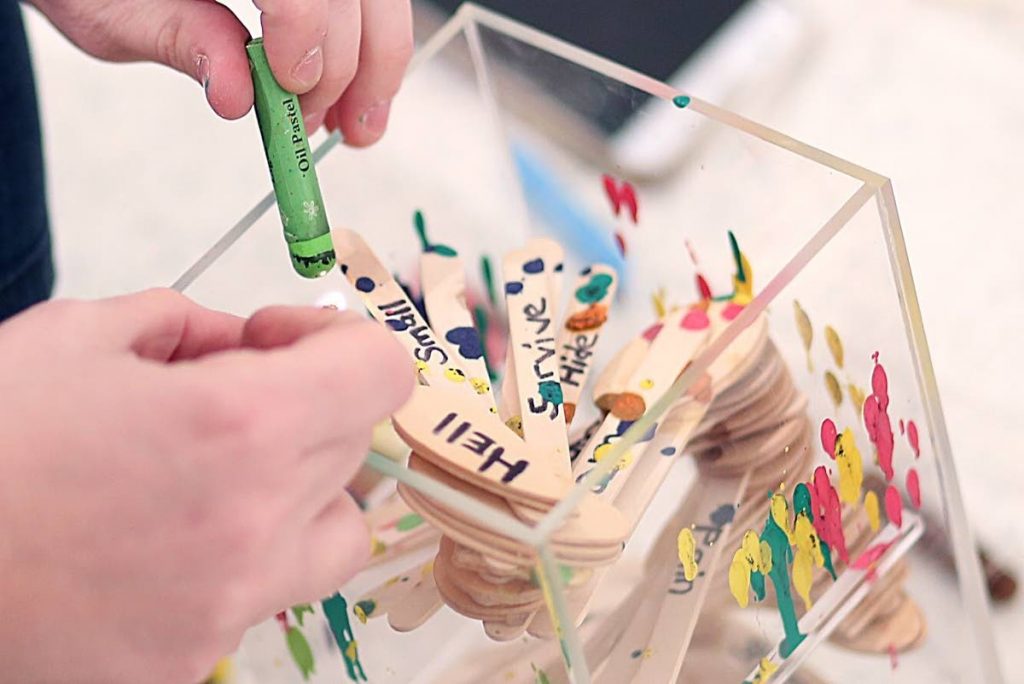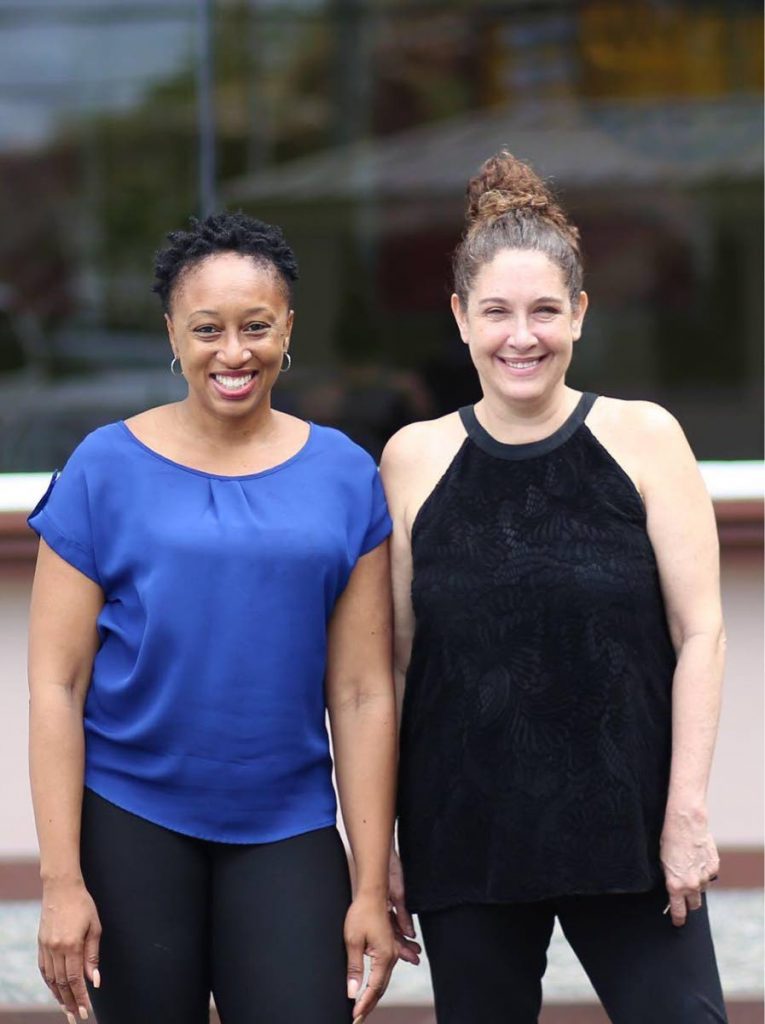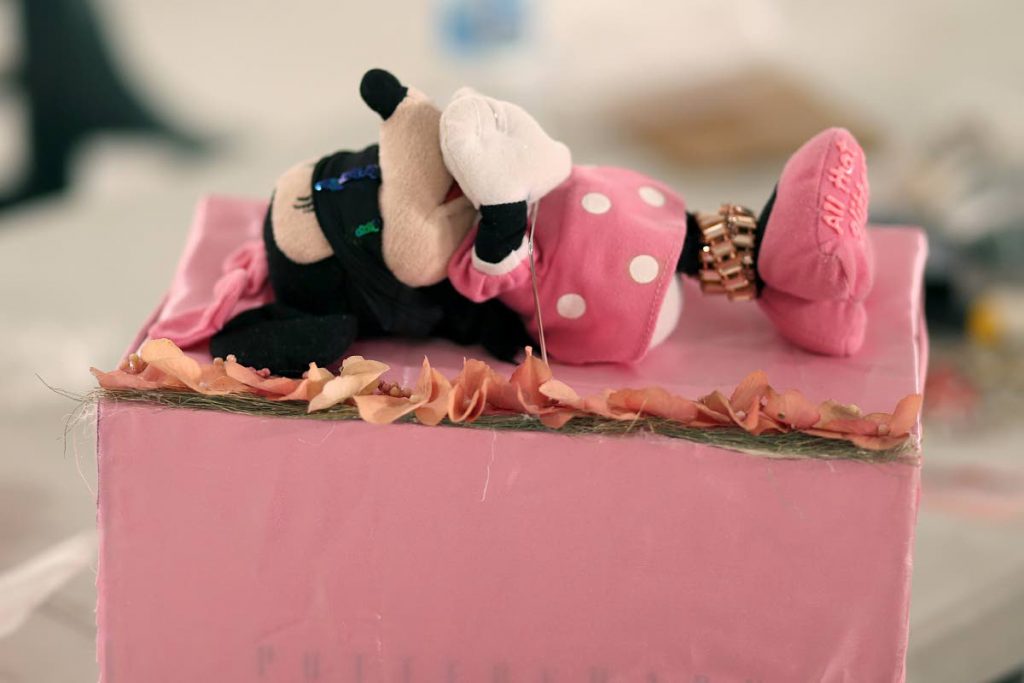Unboxed

The figurative box can represent many things including containment, boundaries, or a safe space.
That was why art psychotherapists and members of the Art Therapy Association of TT, Kim Bryan and Sian MacLean chose that symbol to represent domestic abuse and asked ten survivors to express their feelings by engaging with a box.
The results will be displayed in an art exhibition at Medulla Art Gallery, Woodbrook starting on June 5.
Unboxed: Stories From Survivors of Domestic Abuse will be the outcome of a workshop that took place on three consecutive Sundays, where participants were provided a box and a number of different materials so they could transform it in order to tell their stories.
“The box could be multi-dimensional in terms of feelings, thoughts, and how you show yourself to the world... We thought that would be a good way to start,” Bryan told Sunday Newsday.
Inspired by the Life in Leggings movement, Bryan and MacLean wanted to highlight the issue of domestic abuse, educate people on what abuse was, and open doors for people to access support.

They also wanted to emphasise how art therapy could be helpful in working through a number of issues.
MacLean said, “Part of the goal for this project is awareness of the problem and any resources. By having the exhibition we want to create a dialogue about domestic abuse because even when interviewing, some of the participants were emotionally and financially abused but they did not recognise it as abuse. Because they did not have the bruises, some were dismissing their experience.”
She explained there was an interview process to ensure the participants were ready for the project.
“It takes a lot of reflection to be able to create the piece so we needed to make sure the everybody had a good support network, had had some level of processing, some sort of therapy to do with the abuse, because emotionally it’s very difficult.”
She said some people could not work for more than an hour or two before they had to take a break or left for the day.
During the week they would follow up with the ten participants to make sure they were okay and give them extra therapeutic support.
Bryan added that many people experienced abuse but they were ashamed or did not know where to go after. They wanted to provide a space where it would be okay to share their stories. “By doing that I feel as if we’re validating other people’s experiences, to say there are others like them and they can share their stories.”

She said it did not matter how long ago they experienced the abuse, the participants had difficulty processing the experience and so had residual feelings. She said those feelings did not just go away so the person could move on. Therefore people often took their experiences into their relationships with their partners, children, or on the job.
She said the participants of the workshop in particular experienced a lot of emotional abuse.
“There were lots of words written on and in people’s boxes. What it said to me is that, while a lot of it may not have been physical, there was so much emotional abuse in there. They also had difficulty in processing the emotions that were coming up as they were working on the boxes.”
She said the use of so many words showed her and MacLean that the participants were silent through the abuse.
“One person asked me how raw the box could be. I found that interesting because when you’re experiencing abuse it doesn’t have any boundaries. It is raw, but they still want to sensor themselves. We’re still hiding the abuse. We still feel shame.”
MacLean said those lingering feelings made them feel very vulnerable as they showed themselves through the art. So much so that most participants did not want to go to the show, hear what people had to say about the piece, or have family members attend even though no one would know whose box was whose. She said they also asked if they could damage or destroy it after the exhibition as they did not want to engage with the box again.
One of the participants told Sunday Newsday the process was so challenging that she had yet to complete her box. She said she felt “a bit lost” at the beginning of the because it was difficult to translate her thoughts into art. However, as time passed, the difficulty extended to her emotional state.
“I surprised myself because at first I didn’t feel very affected but by the third week I had to leave the class early. It was too exhausting, emotionally and physically, and I just didn’t want to be there.”
She said her situation was still a court matter and the workshop forced her to face her circumstances and decide what she wanted to say about her experience. She said the process also brought her to the point where she realised that she had enough.
Therefore she intends to get rid of all the “tangible baggage” related to her court matter and the abuse so that she could eventually rid herself of the emotional baggage as well.
“The court documents and the box are here in my home. It takes up space and has negative energy. I plan on destroying the box. Once the exhibition is over I’m going to have a little burning ceremony. I think the box has led me to a sense of acceptance that this is what happened. It all has to do with just putting everything to rest and moving forward.”
The lone man in the group also said he had no intention of keeping the box because it would be very difficult to look at.
“At one point while making it I couldn’t even finish the day because it was too much. You had to focus on your past. For three or four hours that was all that was in your head – remembering your experiences and the things that were said, how you felt at the time. I felt like I went straight back to my childhood and experienced the whole thing again.”
However, he said it was helpful as it was introspective – spending time with yourself while working through things in a safe space. He said he was able to tap into parts of himself that he took for granted and realised how much he matured. He said it also gave him a “stronger sense of self” because although the parts of him that were left after his experiences were scarred and damaged, they were important to the person he was today.
He hoped his participation would be an example to other men, to show it was okay to be different and he hoped more men would face the darker parts of themselves and get help.
He said men did not often come forward and speak about their abuse because of the expectations of society of what a Caribbean man should be.“We’re messed up. A lot of guys have issues and I don’t think they fully understand the things they have gone through have probably affected them in the long term and they don’t deal with it. They carry it into their families, sexual relationships, and so on.”
In addition to the exhibition, there will be a two-hour panel discussion on June 12 at 7 pm at Medulla. There, people from different fields including clinical psychology, research, the judicial system, and a representative from the Coalition Against Domestic Violence would speak on the topic.
Bryan and MacLean thanked the sponsors who supported the project including Massy Foundation, Medulla, Boss and Brydens.


Comments
"Unboxed"